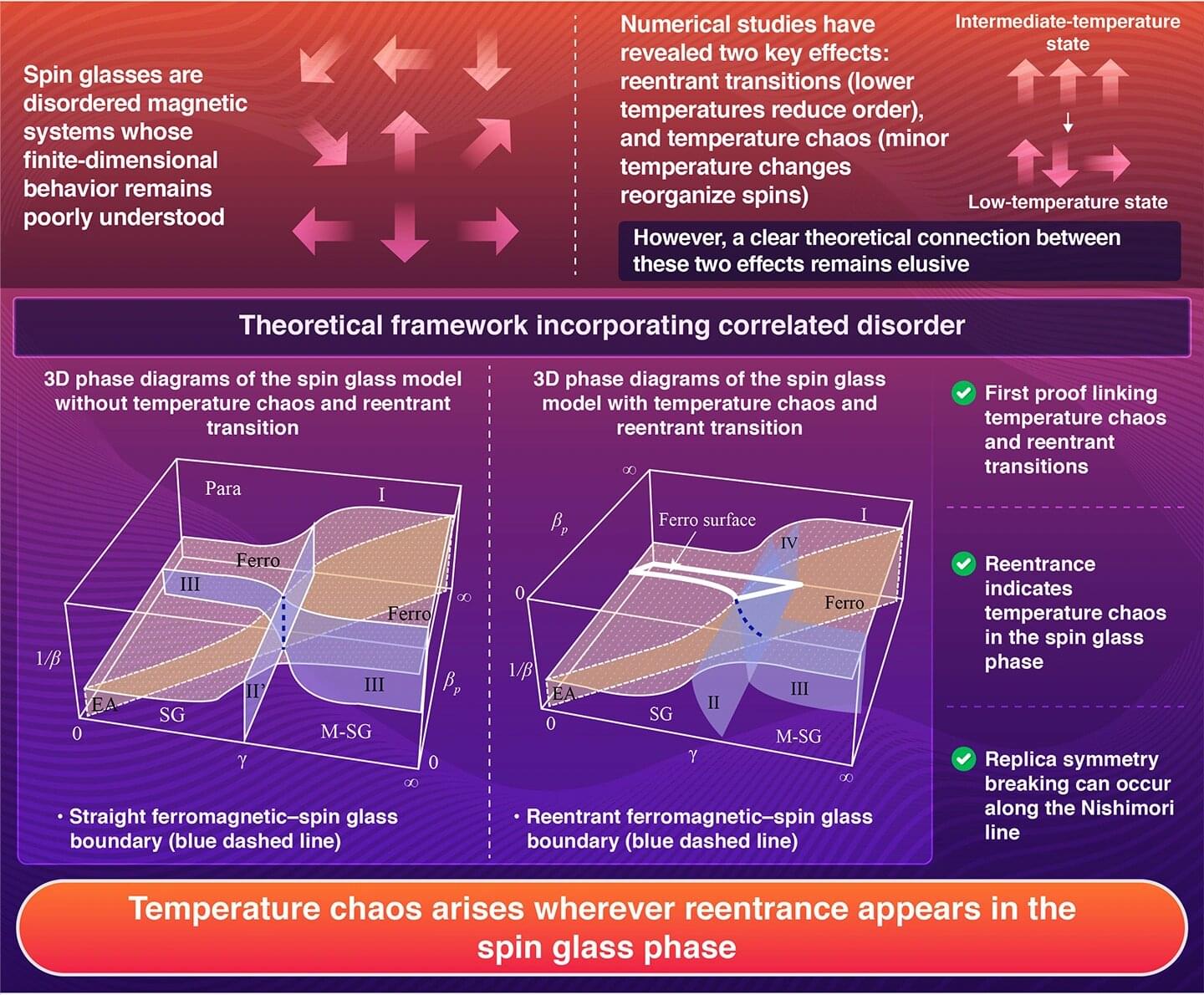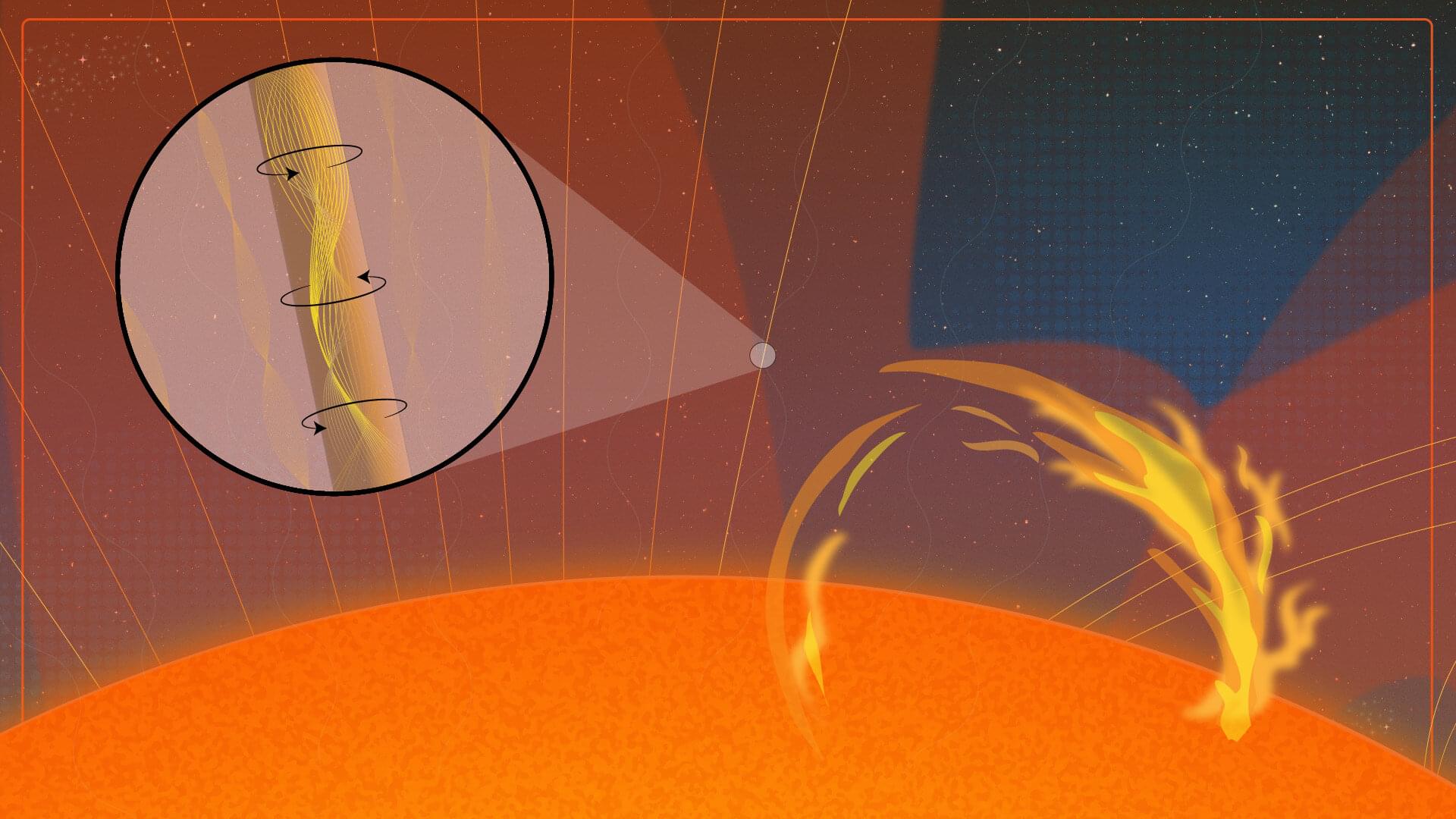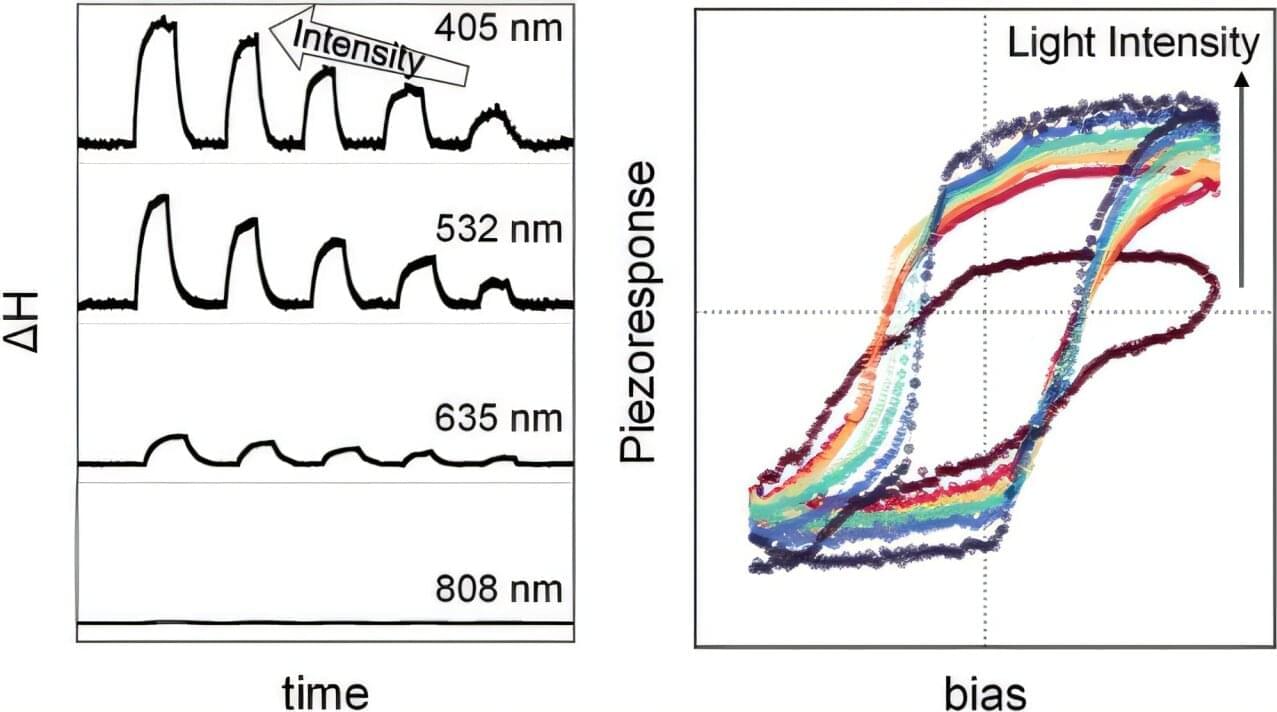A fundamental link between two counterintuitive phenomena in spin glasses—reentrance and temperature chaos—has been mathematically proven for the first time. By extending the Edwards–Anderson model to include correlated disorder, researchers at Science Tokyo and Tohoku University provided the first rigorous proof that reentrance implies temperature chaos.
Spin glasses are magnetic materials in which atomic “spins,” or tiny magnetic moments, point in random directions rather than aligning neatly as in a regular magnet. These disordered spins can remain stable for extremely long periods of time, possibly even indefinitely. This frozen randomness gives rise to unusual physical properties not seen in any other physical system.
To describe the spin glass behavior, physicists use models such as the Edwards–Anderson (EA) model, which simulates how spins interact in two or three dimensions—conditions that more closely reflect real-world systems than the well-studied mean-field model. Numerical studies of the EA model have uncovered two strange and counterintuitive phenomena: reentrant transitions and temperature chaos.








